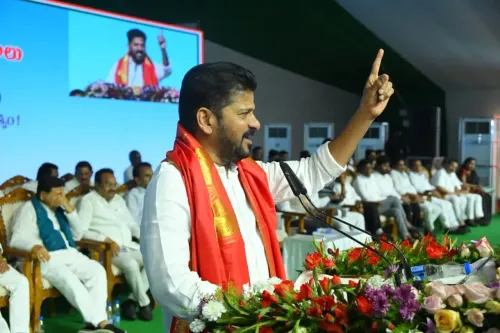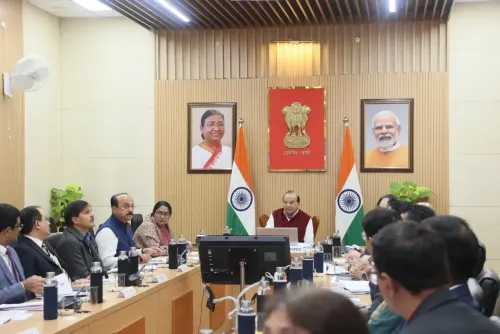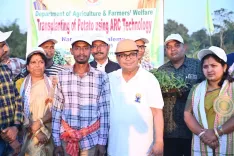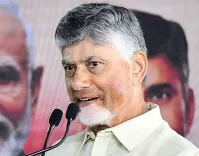Are Swadeshi Apps the Backbone of India’s Digital Sovereignty?

Synopsis
Key Takeaways
- Swadeshi apps are crucial for India's digital sovereignty.
- Government initiatives support indigenous app development.
- India's app market shows significant revenue growth.
- Local apps address unique challenges faced by Indian users.
- The app economy is projected to have a substantial impact on India's GDP.
New Delhi, Oct 8 (NationPress) When Prime Minister Narendra Modi first called for ‘Atmanirbhar Bharat’ (self-reliant India) in 2020, the primary emphasis was on manufacturing, supply chains, and minimizing import reliance. However, over the years, this initiative has evolved to include a significant digital aspect, with India’s ‘Swadeshi apps’ movement becoming a vital part of the nation’s strategy for digital sovereignty.
Union Home Minister Amit Shah has adopted Zoho Mail, illustrating the growth of state-supported platforms that have fostered a thriving environment for private Swadeshi applications. These apps not only symbolize national pride but are also tailored to address India’s specific challenges, featuring low-bandwidth optimization, multilingual capabilities, and affordability.
This year, the Ministry of Electronics and IT (MeitY) initiated a competition to select a developer for an indigenous web browser as part of the Aatmanirbhar Bharat initiative. Zoho emerged victorious in this ‘Web Browser Development Challenge’, followed by Team PING and Team Ajna. Jio Vishwakarma's Multi-Platform Design received a special mention for its innovation.
Zoho Corporation’s Arattai has established itself as a secure, India-first alternative to WhatsApp, attracting endorsements from several Union ministers due to its user-friendliness and local server infrastructure. The Zoho suite, which includes Writer, Sheet, Show, and Mail, provides Indian alternatives to Microsoft Office and Google Workspace.
As India’s IT sector, generating over $282 billion in revenue, shifts focus towards indigenous hardware and software, the Swadeshi app movement is not solely dependent on the private sector. Various government departments are playing a role by offering infrastructure, funding, and legitimacy. MeitY has promoted platforms such as UMANG (Unified Mobile Application for New-Age Governance), which integrates more than 100 citizen services into a single app, as part of the Digital India campaign.
In July last year, Ola co-founder and CEO Bhavish Aggarwal announced the company’s transition to its own in-house Ola Maps. Following Azure’s exit, the company has completely moved away from Google Maps, saving approximately Rs 100 cr annually. Aggarwal shared on social media X, “Check your Ola app and update if needed.” He also highlighted that the Ola maps API is available on @Krutrim cloud, with many exciting features in the pipeline.
Ola Cabs, which started in Bengaluru, has expanded to over 250 cities and even ventured internationally, competing against giants like Uber. In the navigation space, ‘Mappls’ by MapmyIndia provides comprehensive maps, real-time traffic updates, and rural coverage. The National Payments Corporation of India (NPCI) has transformed the financial landscape with BHIM Unified Payment Interface (UPI) and RuPay, reducing dependency on Visa and Mastercard while enhancing financial inclusion.
India has also extended UPI services to countries such as Bhutan, France, Mauritius, Nepal, Singapore, Sri Lanka, and the UAE. In the OTT sector, Reliance Jio’s ‘JioCinema’ and Disney-Star’s ‘Hotstar’ are leading the market by providing regional content at competitive prices.
Furthermore, the Health Ministry’s ‘Aarogya Setu’ and ‘CoWIN’ apps gained widespread recognition during the COVID pandemic, demonstrating the capability of government apps to serve hundreds of millions of users.
Apps from the Agriculture Ministry, like PM-Kisan and eNAM, connect farmers directly to markets and subsidies, eliminating middlemen. A government-managed mobile application hosting platform currently features over 1,775 verified Indian apps.
According to the B2B media platform Business of Apps, India’s app market generated $3.3 billion in revenue in 2023, an increase from $2.7 billion in 2022. The Broadband India Forum estimates that the app economy could contribute 12% to India’s GDP by 2030, suggesting a potential value of $800-850 billion assuming the current growth trajectory continues.










